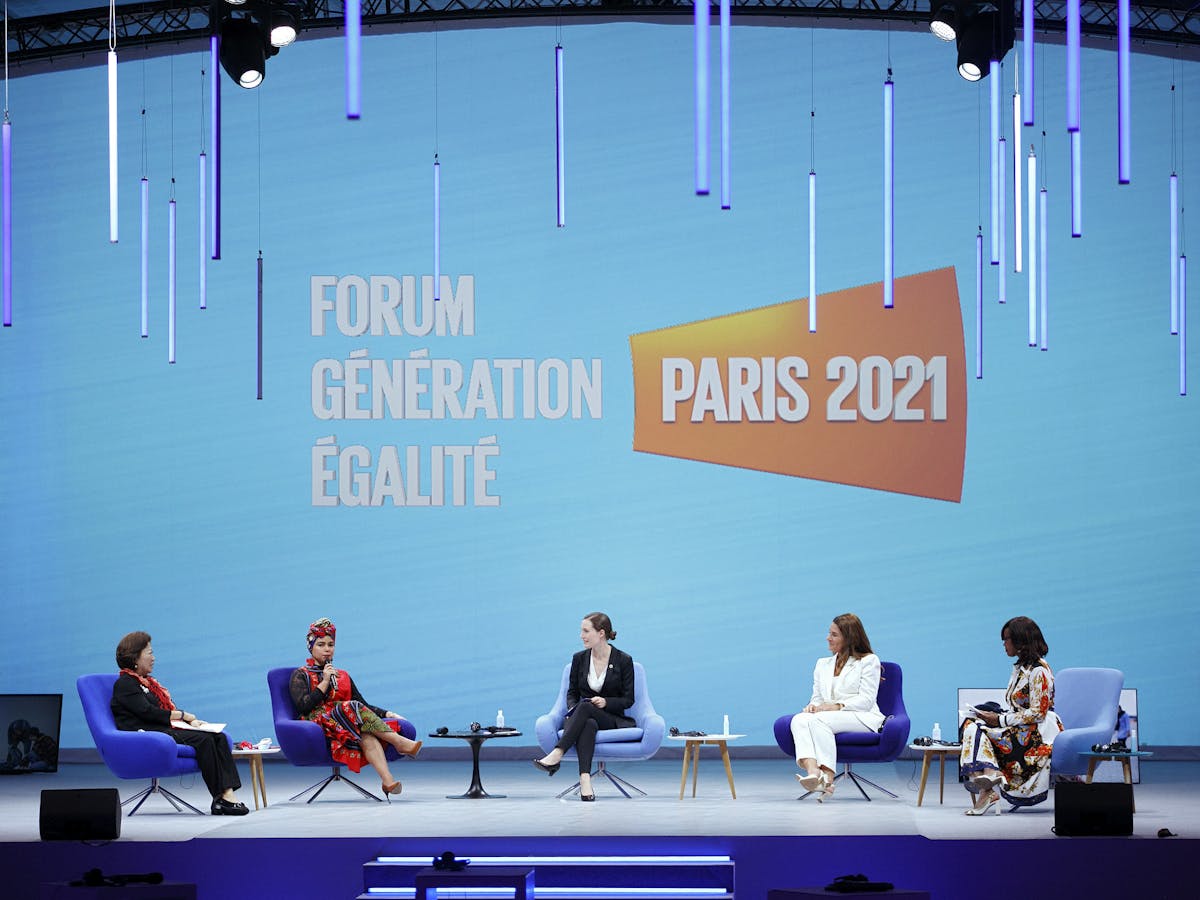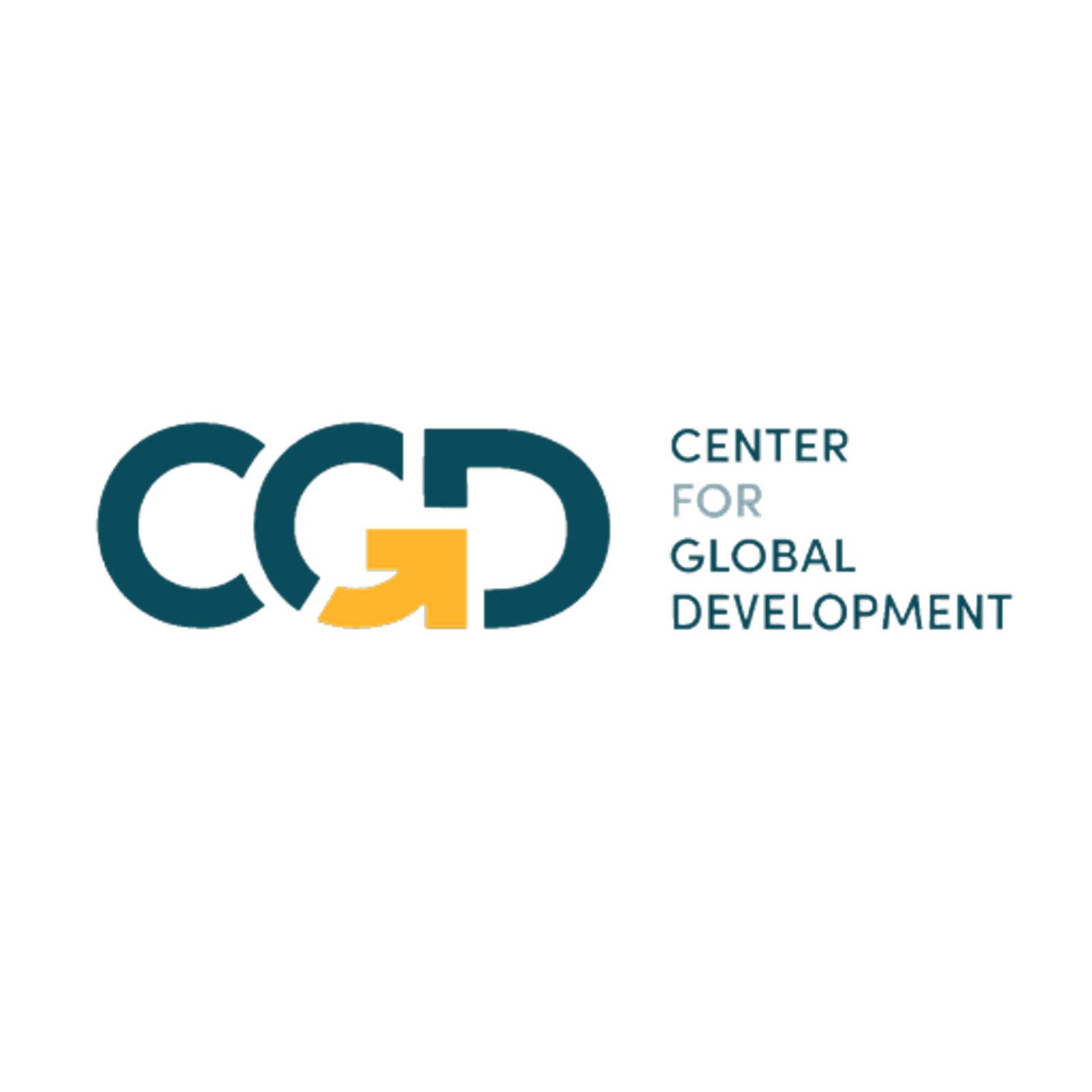By Megan O’Donnell (Center for Global Development); Zoe Johnson and Kalila Jaeger (Donor Tracker); Henry Lewis and Jamie Holton (Publish What You Fund)
2021 has been a big year for global gender equality advocates, practitioners, and investors. The Generation Equality Forum brought together donor governments, multilateral organizations, philanthropists, activists, and youth leaders to accelerate progress toward Sustainable Development Goal (SDG) 5: “Achieve gender equality and empower all women and girls.” This event, and the commitments made at it, are made even more critical by the backdrop of the COVID-19 crisis, which is exacerbating gender disparities around the world, threatening to dramatically set back progress toward SDG 5.
How can the global community build on progress made at major global convening events like the Generation Equality Forum to ensure commitments are implemented, tracked, and built upon to sustain momentum? One answer lies in harnessing existing tools for accountability.
In this blog series, produced jointly by researchers at the Center for Global Development, Donor Tracker, and Publish What You Fund, we aim to:
- review existing accountability tools related to bilateral, multilateral, and/or philanthropic donor institutions’ funding for gender equality,
- review how these tools have been studied to date, and
- propose how we can use and improve upon available tools to push for more and better financing to achieve SDG 5.
What tools currently exist for tracking funding for gender equality and women’s empowerment?
This first blog provides some examples of country, institution, funding-specific, and cross-institution tools for tracking gender-related finance. While not an exhaustive list, this blog aims to provide illustrative examples to give researchers, practitioners, and advocates an idea of the types of tools they can harness to monitor donors’ efforts toward achieving gender equality.
Cross-institutional tools
1. OECD DAC Gender Equality Policy Marker
Governments, multilaterals, and philanthropic foundations report their gender-related development finance annually to the Organisation for Economic Co-operation and Development (OECD) Development Assistance Committee (DAC) using its gender equality policy marker.
Projects can be tagged as having a “principal” or “significant” focus on promoting gender equality. Although this funding is self-reported, the DAC has clear definitions (with accompanying examples) of what types of projects would qualify as “principally” or “significantly” targeting gender equality. Today, all 30 DAC members—as well many private foundations and multilateral organizations—use these markers in their reporting on an annual basis, and quantitative data as well as descriptive program information are made publicly available.
The DAC policy marker plays a role in other gender equality accountability mechanisms used by governments and organizations outside of the OECD DAC. Many donors (e.g., France, EU, Sweden), have integrated the OECD marker into their internal performance frameworks. The guidance note prepared by UN Women for country governments ahead of the Generation Equality Forum asked whether countries “track the proportion of official development assistance (ODA) that is invested in the promotion of gender equality and the empowerment of women.” The marker has also just been aligned with the 2X Challenge criteria (see below).
Donors that report development spending to the International Aid Transparency Initiative (IATI) use the same OECD-developed scoring system to reflect projects’ gender focus. More than 1,000 organizations including donor governments, development finance institutions, UN agencies, non-governmental organizations (NGOs), foundations, and private sector actors publish data to IATI; although, as of July 15, 2021, only about a third publish gender marker scores for their reported funding. Unlike the OECD, which publishes data annually, with an 11-month time lag, the IATI Standard encourages organizations to update their data at least quarterly but also allows for monthly or even daily updates.
2. Inter-Agency Standing Committee (IASC) Gender with Age Marker (GAM)
The Gender with Age Marker (GAM), managed by the Inter-Agency Standing Committee (IASCS), is primarily a tool to help track and assess how gender-related activities are incorporated into humanitarian projects at the organizational, country, and global levels. It builds on and strengthens the original IASC Gender Marker by adding age and a monitoring component. Used as part of United Nations Office for the Coordination of Humanitarian Affairs (UN OCHA) Humanitarian Program Cycle (HPC) project module, the GAM is currently the only quantitative source of data on gender and age. The GAM can be applied to critical documents and reports used throughout a humanitarian crisis, including strategic plans, cluster response plans, the Humanitarian Needs Overview (HNO), Humanitarian Response Plans (HRPs), and Periodic Monitoring Reports (PMRs). Since 2019, all humanitarian projects seeking funding under an active HRP are required to be screened using the marker.
The GAM codes users’ projects on a 0–4 scale using ten Gender Equality Measures (GEMs). Four key GEMs (gender analysis, tailored activities, influence on project, and benefits) are used in projects’ design phase, while the remaining six GEMs are used in the monitoring phase.
While the GAM is not a policy marker directly designed to track funding towards gender equality in humanitarian contexts, it is being used on two key databases which track humanitarian funding, run by UN OCHA: the Financial Tracking Service (FTS) and the Country-Based Pooled Funds (CBPF) (see Table for further information). However, these platforms do not allow the user to broadly filter funding by the GAM, making it difficult to easily access and use gender-related data on humanitarian financing.
3. 2X Challenge Criteria
The 2X Challenge began as a collaboration among G7 development finance institutions (DFIs), which have since been joined by bilateral DFIs, such as from Denmark, Finland, the Netherlands, Sweden, and Switzerland, and multilateral institutions including the European Investment Bank, the Asian Development Bank, and the International Finance Corporation. All institutions joining the 2X Challenge agree to a set of criteria outlining what qualifies as a 2X investment (e.g., investing in a firm that is 51 percent women-owned, has 30 percent women on its board or investment committee, or has 30–50 percent women in the workforce), and results are monitored according to this framework.
As announced at the Paris convening of the Generation Equality Forum, 2X members and the OECD have worked to align their respective criteria to promote further harmonisation and accountability in financing for gender equality.
At the moment, there is no central place to view or download data about 2X Challenge members’ investments that meet the 2X criteria. There are however members who publish such information to their own websites or online portals. A starting point to learn which members openly publish information about their 2X investments is this report by Javier Pereira, commissioned by Publish What You Fund.
Country, institution, and funding-specific tools
1. Bilateral Assistance: Canada’s Feminist International Assistance Policy Indicators
In 2017, Canada became the second country in the world, after Sweden, to adopt a feminist approach to development. Canada’s Feminist International Assistance Policy (FIAP) aims to support international development advocacy, financing, collaborations, and research, and innovation with the highest potential to close gender gaps.
In 2019, Global Affairs Canada (GAC), in collaboration with Development Gateway, developed a set of Key Performance Indicators (KPIs) to track and monitor progress toward the goals set out in the FIAP. Three sets of complementary indicators were also developed:
- Global indicators to measure progress toward the SDGs;
- Advocacy indicators to measure Canada’s gender equality advocacy efforts; and
- Corporate indicators to monitor internal gender equality targets within GAC. Canada reports on its progress against these indicators in a Departmental Results Report, published at the end of each fiscal year.
2. Multilateral Assistance: World Bank Gender Tag
In 2017, the World Bank Group launched a new “gender tag,” which aims to strengthen links between country-level and/or sector-specific gender equality objectives and World Bank operations, identifying those operations that meaningfully narrow gender gaps in the four key pillars of its gender strategy (improving human endowments, removing constraints for more and better jobs, removing barriers to women’s ownership and control of assets, and enhancing voice and agency and engaging men and boys).
The adoption of the gender tag marked the World Bank’s movement away from a process-oriented means of measuring gender integration into projects and towards a more results-oriented one. Previously, projects were assigned a gender score ex ante, receiving one point if project teams intended to incorporate considerations of gender into projects’ design, implementation, and monitoring and evaluation. The gender tag, on the other hand, only counts projects with a clear results chain that articulate how a project will contribute towards narrowing specified gender gaps. Under the Eighteenth Replenishment of the International Development Association (IDA18), the World Bank set a new target for at least 55 percent of operations to fulfill the tag criteria. The tag’s use and impact are likely to be reviewed as the World Bank prepares its post-2023 gender strategy.
3. Philanthropic Funding: SDG Funders
SDG Funders is a platform designed primarily to track US philanthropic investments related to the SDGs. Users can use the platform database to visualize philanthropic funding by SDG, region, country, and population group for 2010-2017. Using the search term “SDG5,” users can search and visualize funding towards gender equality. The platform is managed by the NGO Candid. Candid collects data on philanthropic funding from Internal Revenue Service (IRS) 990 tax forms, directly-reported grants, and publicly available sources (e.g., open databases and news sources). The organization has developed an algorithm to identify and help allocate funding based on the 17 SDGs (see methodology); however, the platform’s latest data is from 2017.
Transparent, usable, and detailed data on financing for gender equality is essential to measuring global progress toward—and achieving—SDG 5. This beginner’s guide to gender equality policy markers has provided an overview of existing accountability tools related to bilateral, multilateral, and philanthropic donor institutions’ funding for gender equality to arm advocates and others working to improve gender equality globally with the tools they need to hold donors accountable. The subsequent blogs in this series will delve into deeper analyses of these tools, explaining how they have been studied to date and how the global community can use and improve upon them to push for more and better financing to achieve SDG 5.
Photo: UN Women via Flickr


